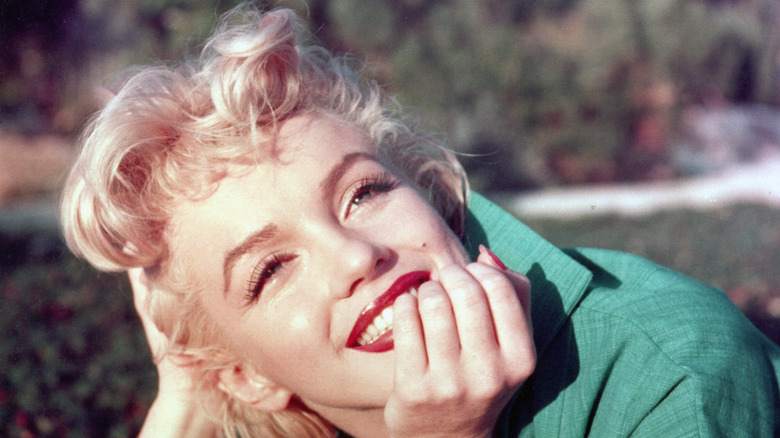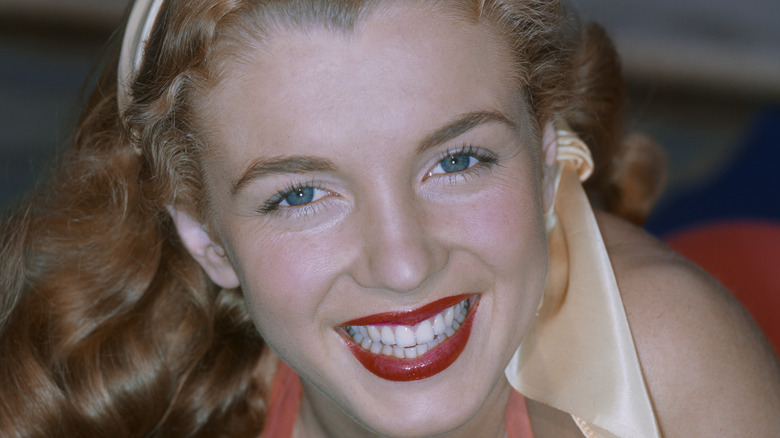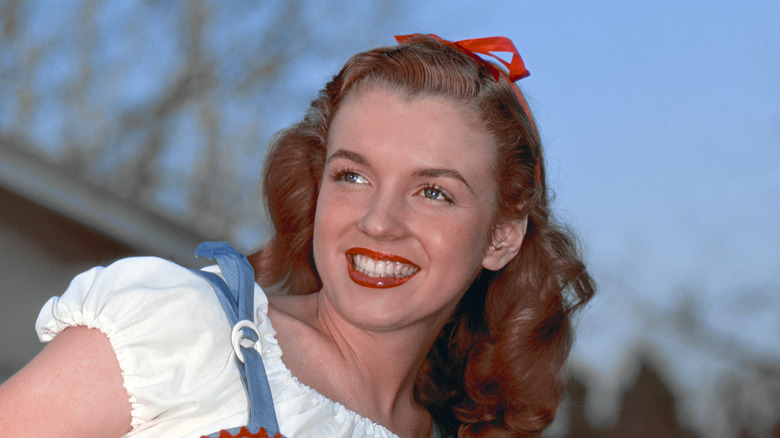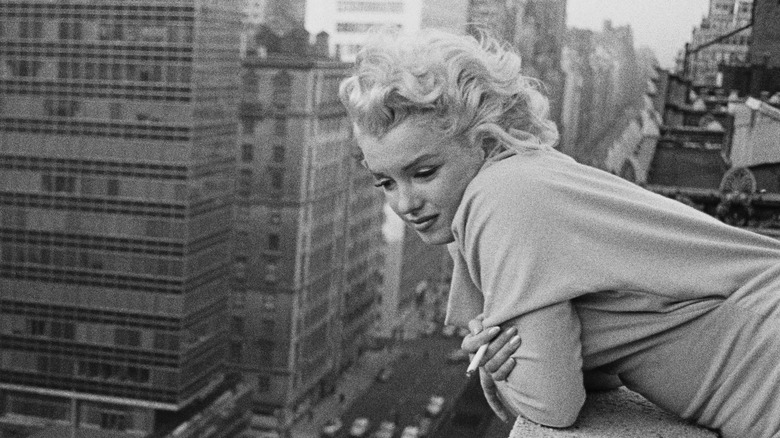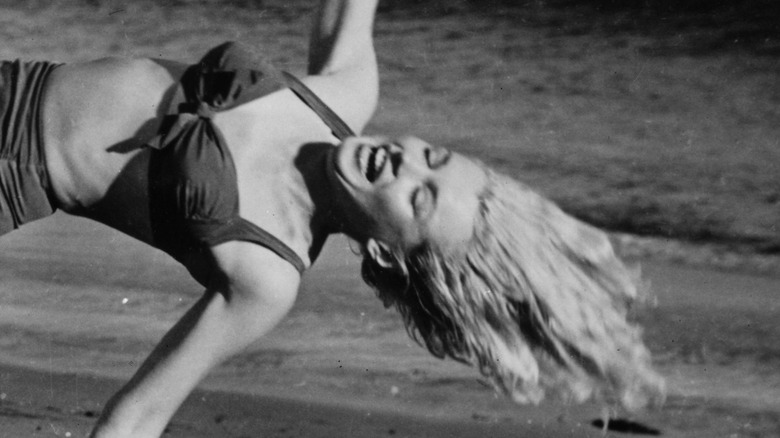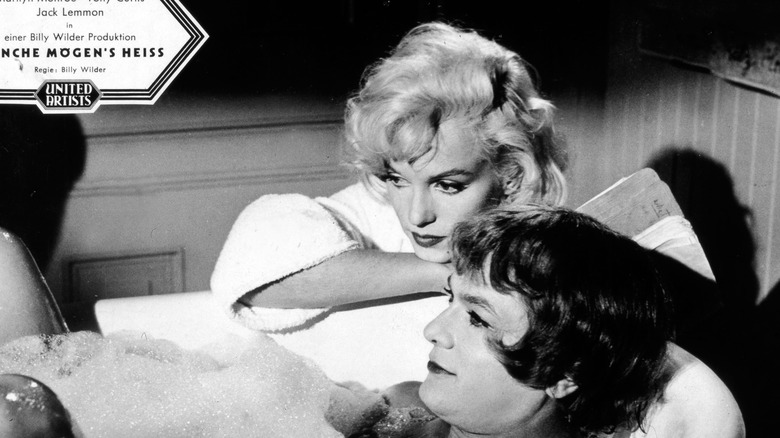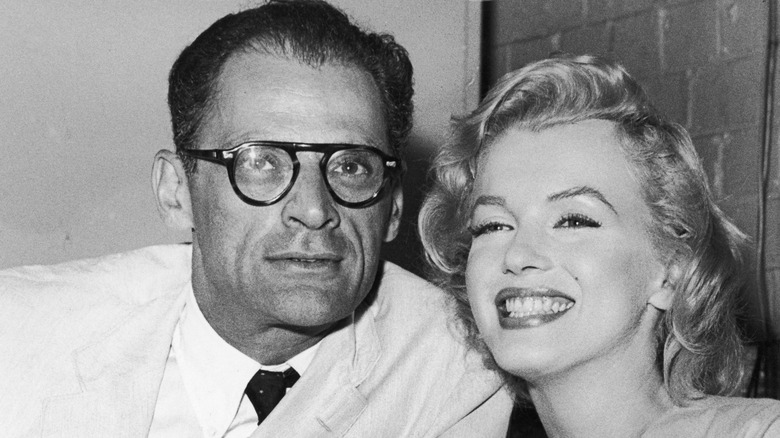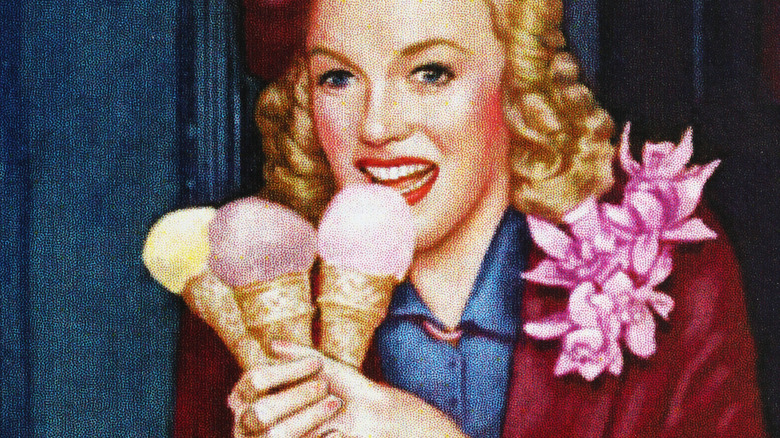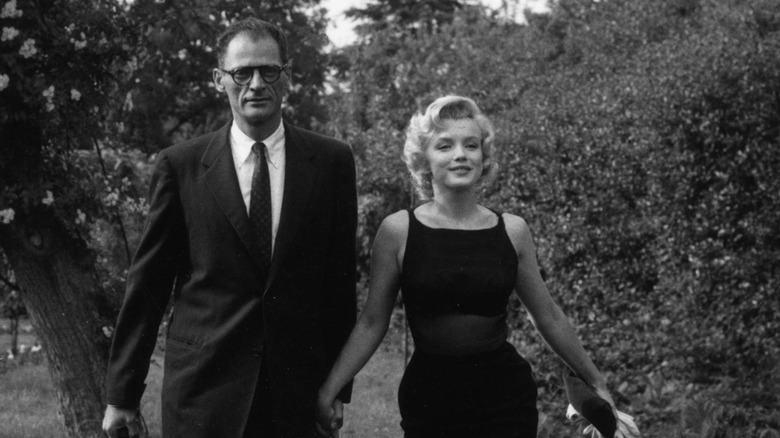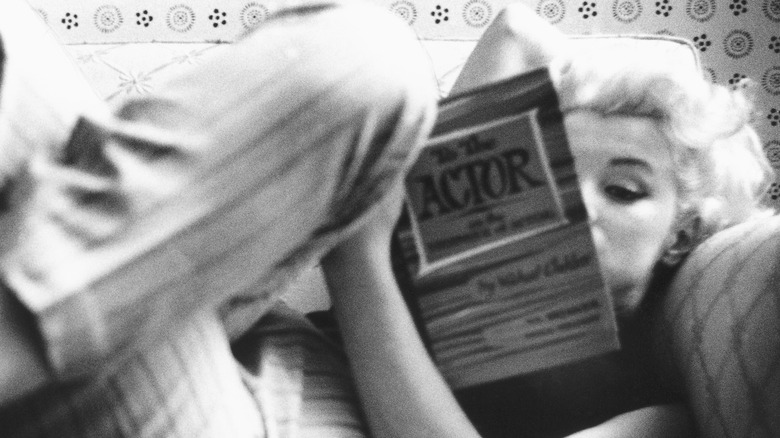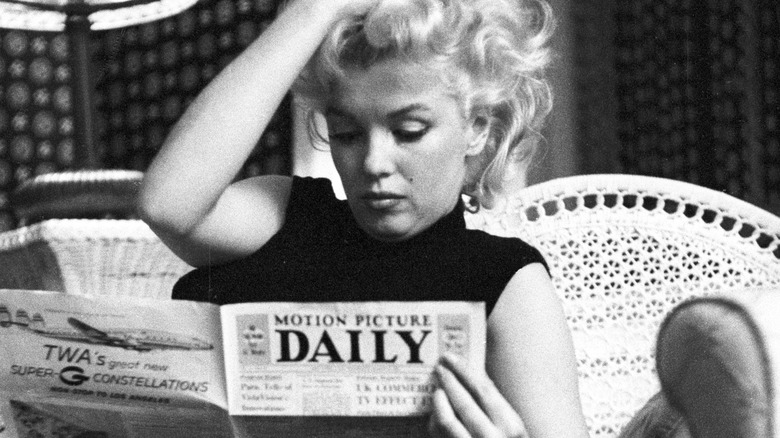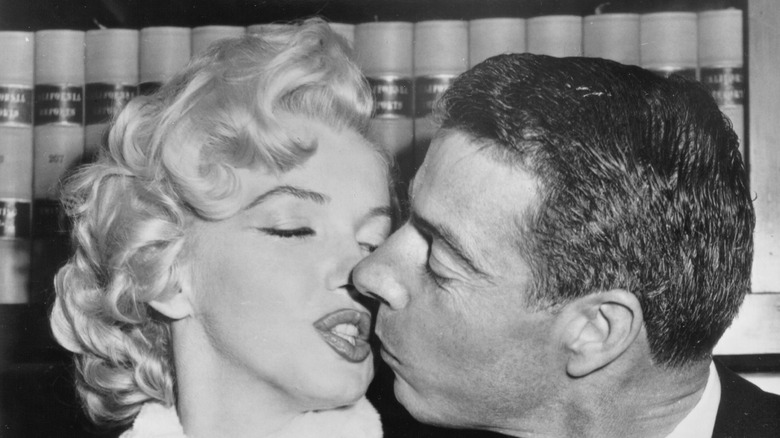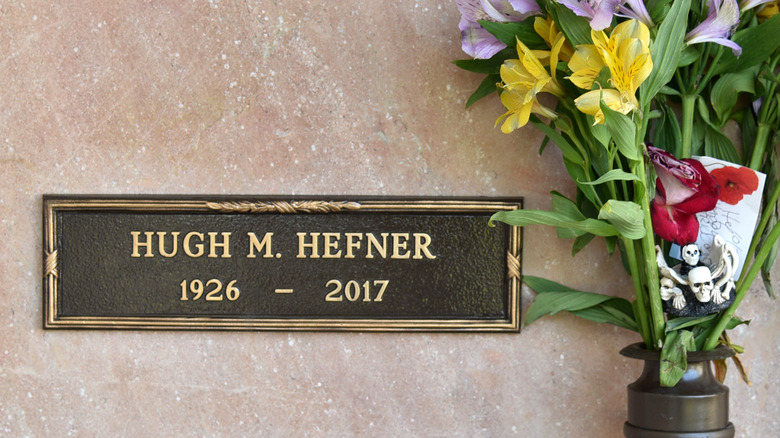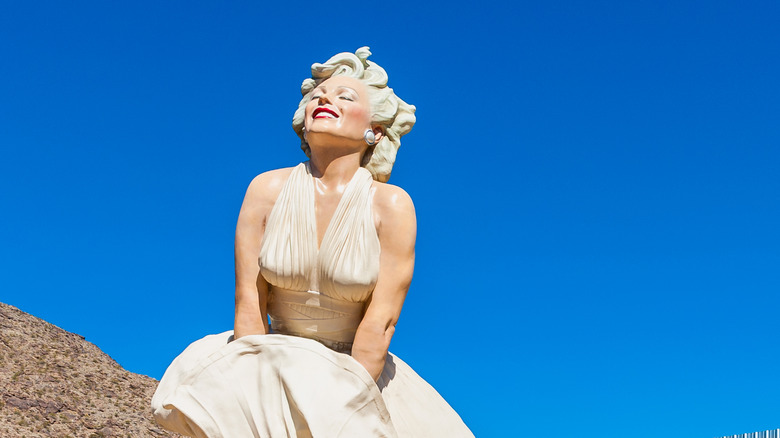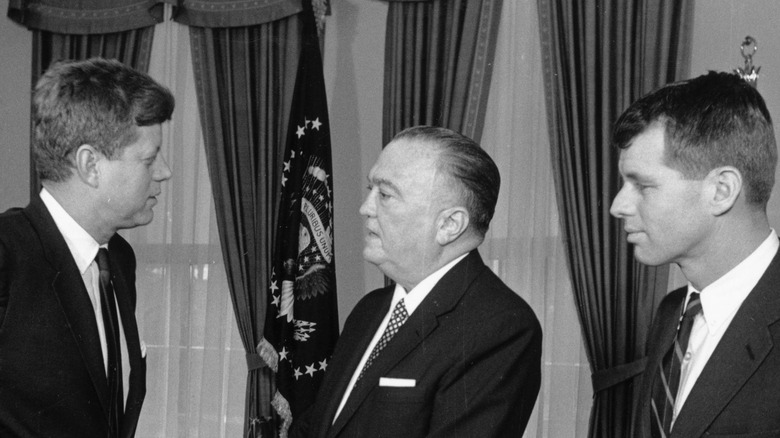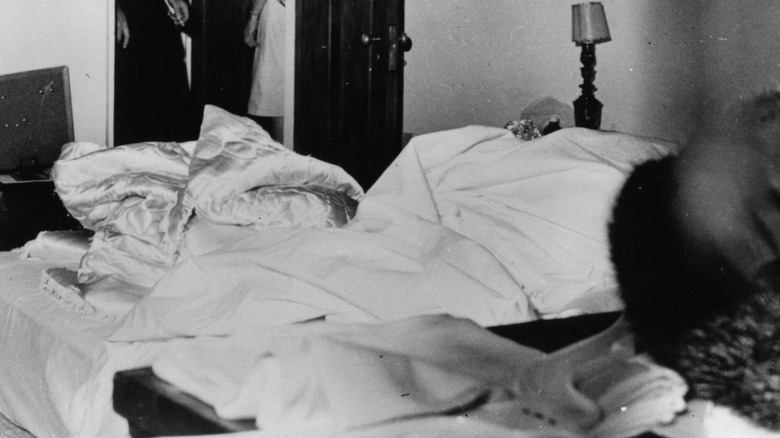The Untold Truth Of Marilyn Monroe
Marilyn Monroe's tragically short existence was packed with intrigue that has long outlasted her 36-year tenure on earth. From her low-key intelligence to her illicit liaisons with the great and the good, Monroe was a many-layered figure — far more than just a sex symbol and pop culture icon.
One of the great tragedies of her life was that she never quite became the serious thespian she so longed to be. However, the discovery of her archive of letters and diary entries, "Fragments: Poems, Intimate Notes, Letters," has shed light on the turbulent thoughts and desires of a woman who was always so much more than what she appeared. They showed her to be someone with creative flair, literary passions, and a desire to make her craft be its very best, even though her unhappy childhood, fraught personal life, experiences of sexual abuse and struggles with addiction ultimately proved to be her undoing, contributing to her death from a drug overdose in 1962.
Yet for Monroe, death was not the end. She is unlikely ever to be forgotten, even if she is not always remembered quite how she would have liked. In the years since her tragic demise, her legacy has been reassessed, with fans drawing attention not just to her magnetic presence on screen but her considerable intellect and outspokenness about the sexism of Hollywood, at a time when doing so was almost impossible. This and some of the other surprising aspects of her eventful life are listed below.
She had a chaotic early life
Marilyn Monroe was born Norma Jeane Mortenson and christened Norma Jeane Baker in California in 1926. At two weeks old, her mother Gladys Baker left her with foster parents Ida and Wayne Bolender, who were strict, but mostly provided a loving and stable home (via Biography). Her father was absent but Norma was close to her foster brothers and sisters, and her mother would come to visit whenever she could, sometimes having the young Norma over to stay for a few days at a time in her apartment in Hollywood.
However, the relationship fractured when Gladys tried to kidnap Norma in a duffle bag, as well as when her later attempt to adopt the child was rejected. Attempts by Ida to reunite mother and daughter later on were initially successful, but before long, Gladys' mental instability led to her being diagnosed as a paranoid schizophrenic and sent to a mental institution. Norma was 8 years old.
From this point, she only saw her mother occasionally, being sent to live with family friend Grace Goddard, Gladys' sister-in-law, Goddard's friend Edith Ana Lower, and in the Los Angeles Orphans' Home. Norma faced going back into state care (where, according to Biography, she was sexually assaulted) when Goddard and her husband moved to West Virginia. However, according to the LA Times, she instead agreed to an arranged marriage at 16. Her husband, James Dougherty, was five years older and had started dating her when she was only 15.
She worked in a drone factory during the war
By the outbreak of World War II, young Norma Dougherty was spending her days as a solitary housewife while her husband served abroad as a merchant seaman. He initially taught sea safety on Catalina Island just off the coast of Los Angeles, where the couple had an apartment, as highlighted by the LA Times. However, in his absence Norma decided to take a job in industry for the war effort. She worked in an assembly line for the company Radioplane, inspecting and spraying parachutes attached to remote-controlled aircraft in a factory in Burbank, California.
Her role involved working 10 hours a day for $20 per week, and Norma was warned by her mother-in-law that it would cause major damage to her hair and her health. Yet in 1944, Monroe was photographed as part of an army moving picture series on women in war production. It was a life-changing moment, as the image led to her becoming an in-demand model in Los Angeles. By coincidence, the man who set up the photoshoot was future actor and president Ronald Reagan (via The New York Times).
Despite their youth and limited time together, Norma and James Dougherty were genuinely in love. As stardom beckoned, the pressure on Norma to be unmarried increased. Despite her husband's attempts to talk her out of it, she served him divorce papers and the marriage ended in September 1946. Norma, who had signed a contract with 20th Century Fox, went on to conquer Hollywood.
Poor mental health ran in the family
The former Norma Jeane was reportedly named after film star Norma Talmadge (via Tulsa World). She took on her stage name in tribute to her mother's maiden name, Gladys Monroe (via "My Story"). It was not the only way her mother's actions would influence her future.
The fragile mental state of Gladys, who was schizophrenic and often in hospitals, gave her a fear of hereditary madness. Monroe's friend and acting tutor Lee Strasberg encouraged her to have regular sessions with the psychotherapist Dr. Margaret Hohenberg. Her archive "Fragments: Poems, Intimate Notes, Letters," analysed by Vanity Fair, shows how the process most likely unearthed a childhood incident of sexual abuse for which she was shamed by her guardian Aunt Ida. Although it was tortuous, Straberg believed she needed to go through the process to reach the emotional depths of an artist.
Monroe later flew in Dr. Hohenberg from New York to the U.K. to be by her side when she discovered her husband, the playwright Arthur Miller, had diary entries about how embarrassed he was by her. This was disastrous for Monroe, who constantly battled with self-doubt and fears of letting down those she loved. She began relying on barbiturates to help her sleep. She switched to two more psychotherapists and was eventually sent to a psychiatric ward, supposedly as a cure for her bouts of stress and insomnia. Yet the cruel treatment by the doctors caused her to rebel. Eventually she was rescued by Joe DiMaggio, her second husband.
She could be eccentric and erratic
Despite her talent, charm, and humor, Marilyn Monroe could be bewildering and exasperating to work with. According to the LA Times, she would often arrive late on set, particularly when working with stars she was intimidated by like Ethel Merman. She worked with some of the most famous names of the day, including director Billy Wilder, but would cause exasperation by sometimes not showing up at all or having to do the same takes over and over again. This all meant she was eventually fired from the production of the film "Something's Got to Give." She was even described by photographer Lawrence Schiller as having "no perspective" and "no idea what was going on."
Monroe demonstrated other quirks such as referring to herself in the third person, with photographer Sam Shaw (quoted in Donald Spoto's "Marilyn Monroe: The Biography") recounting hearing her go over "Marilyn's" performances, saying "she wouldn't do" this or that. According to Vogue, Monroe would try to enhance her on-set glow by smearing herself all over with vaseline in an attempt to look more "luminous."
These quirks and insistence on her own schedule were often interpreted as a sign of Monroe's drug-addled self-absorption. Or to put it in the words of screenwriter Walter Bernstein, as reported in the Independent: "This is a movie star who's getting her way, and who doesn't give a damn about anybody else, and is being destructive and self-destructive." Yet it was a sign of something far deeper — and sadder.
The camera made her feel insecure
Many of Marilyn Monroe's eccentricities were rooted in how uneasy she felt while in front of the camera — so much so that she became notorious for forgetting her lines and often found it hard to string sentences together. According to the Independent, director Billy Wilder took to hiding snippets of the actor's lines within props on set so that she could read them furtively. Although her performances still garnered praise, it was a phobia she never fully recovered from.
Beforehand she would often have to be coaxed out of her trailer, with even just the prospect of being in front of the camera causing her to erupt into a full-body rash. Once on set, her difficulties with remembering her lines would be coupled with her often missing the director's cues, resulting in Monroe being out of focus at the wrong moment or shot in the wrong lighting, languishing in either too much or too little shadow (via the LA Times). Despite being the envy of so many in the industry, Monroe never truly felt good enough.
She even took secret acting classes with Lee Strasberg when she was famous, sauntering in and hovering near the back at the Actors Studio in New York in the hopes of not being recognised (via Vanity Fair). And despite her reputation for great natural beauty, a medical file from Dr. Michael Gurdin (reported by the BBC) showed that she had plastic surgery on her chin and nose.
The FBI kept tabs on her
The 1950s was a fearful period for the entertainment industry. Screenwriters, playwrights and actors lived in fear of "the black list," the notorious facsimile kept by Senator Joseph McCarthy of anyone accused of communist sympathies. For those on the list, it could mean the end of theirs careers.
Playwright Arthur Miller narrowly escaped this fate in 1956 when he was called to testify against suspected colleagues in front of the House Un-American Activities Committee, according to Biography. When he refused to do so, Marilyn Monroe, who was engaged to him, stayed loyal to her fiance — despite warnings by her peers that it could permanently damage her career. Miller's announcement of his upcoming nuptials during the hearing was likely to have played out in his favor; he avoided a jail sentence, being given a suspended sentence that was overturned in 1958, and he and Monroe suffered no permanent public backlash.
Yet the FBI continued to nurse suspicions of Monroe. It also didn't help that she had requested to visit the Soviet Union in 1955. She never did make that trip, but the FBI opened a file on her. The real estate listing of her former home describes the discovery in the 1970s of a "sophisticated, government grade eavesdropping and telephone tapping system that extended into every room of the house." Its origins were never confirmed, although some believe it to have been done by the mafia, as described by biographer Anthony Summers in Vanity Fair.
She developed a love of cooking
For a long time Marilyn Monroe's culinary skills left much to be desired. In an interview with the Chicago Tribune, her friend the actress Shelley Winters stated that she didn't even know how to rinse lettuce for a salad. Yet after Monroe's death, a number of her recipes were discovered — including one for stuffing a chicken or turkey, which turned out to be complex and sophisticated. The collection "Fragments: Poems, Intimate Notes, Letters" showed it to have a diverse range of ingredients and methods, including three kinds of nuts, parmesan, raisins, simmered livers, and browned beef, and implied that she had confidence and originality when it came to cooking.
The origins of the recipe are unknown. When Monroe died, among her possessions were two cookbooks — the 1951 edition of "The New Fanny Farmer Boston Cooking-School Cook Book" and the 1953 version of "Joy of Cooking" — but neither contain references to this kind of stuffing, claims The New York Times. Its heavy Sicilian flavors are thought to have possibly come from the parents of Monroe's second husband Joe DiMaggio, who were first-generation immigrants.
Later on, as stated by the Atlanta Jewish Times, Monroe promised her third husband Arthur Miller on their wedding day that, in tribute to his family's traditions, she would "cook noodles like his mother." Like many aspects of Monroe's personal life, cooking showed a creative and imaginative side to her that was often hidden from the public.
She converted to Judaism
Marilyn Monroe's turbulent upbringing made her long for a more stable home life. One of the brief times she achieved this was when, according to the Atlanta Jewish Times, she embraced Judaism as a way to be closer to husband Arthur Miller. Although Miller was not devout, Monroe was keen to play a part in his family's traditions, while also finding harmony and solace in the spirituality of Judaism.
During her conversion period she studied under Rabbi Robert Goldburg, who had given her Jewish texts to absorb, and kept a prayer book scribbled with personal notes — a gift from her husband, who had received it as a Bar Mitzvah present. The book was found among Monroe's possessions when she died. She also kept a mezuzah, a tiny scroll of sacred Jewish texts, in her home along with a menorah (the iconic seven-branched candelabrum) that played the Israeli national anthem, the "Hatikvah," out loud.
She was open about her identification with the history of persecution endured by many Jews, saying, "Everybody's out to get them, no matter what they do, like me." Many of her friends and colleagues in New York as well as in Hollywood were Jewish, including her three psychiatrists, the poet Norman Rosten, and her agent Johnny Hyde. According to the Jewish Museum, her conversion was a sign of a profound transformation that was kept private from her more lightweight public persona. It was a sign of Monroe's rich, albeit troubled, inner world.
She was well-read and liked smart men
Marilyn Monroe had a huge private library of around 430 books, nursing a habit as a voracious reader and ardent consumer of novels and poetry. As highlighted by Open Culture, the actor could be pictured hunched over copies of celebrated literary tomes such as "Ulysses" by James Joyce and iconic books of verse such as Walt Whitman's "Leaves of Grass." Far from wanting to be portrayed as the flighty and empty-headed starlet that her public persona implied, she was most keen on being photographed while immersed in a book. Her collection included other 20th-century classics like "On the Road" by Jack Kerouac, "The Great Gatsby ” by F. Scott Fitzgerald, and "The Sun Also Rises" by Ernest Hemingway. It was part of a mostly doomed attempt to be taken more seriously as an artist as well as a person.
Her taste in men reflected this. Arthur Miller, her second husband, was a highly successful playwright and literary heavy-weight, but before him Monroe's private fantasies had skewed towards older and even more intellectually formidable men. Actress Shelley Winters, her former roommate, said in an interview with the LA Times that during discussions about which men they would sleep with, Monroe's had put forward the venerated scientist Albert Einstein as one of her ideal pin-ups — so much so that after her death a silver-framed photograph of him was found propped up on her piano. Winters admitted that she never knew how many people Monroe had ticked off her list.
Her dog wrote a book (sort of)
Singer Frank Sinatra, one of Marilyn Monroe's friends and admirers, gifted a dog to her in 1960 named "Mafia Honey," who was looked after by his secretary when she died. The Maltese terrier's moniker was apparently a nod to the rumors that circled Sinatra about his links to organized crime.
"Maf" lived with Monroe for the final two years of her life, during the period when she had separated from Arthur Miller and was regularly mingling with celebrity friends and peers in New York. The novelist Andrew O'Hagan later penned a work of fiction in 2010 that was told from the point of view of the orphaned "Maf." The book, "The Life and Opinions of Maf the Dog, and of His Friend Marilyn Monroe," imagines Monroe's pet as someone who was as well-read, thoughtful, and complicated as his mistress, occupying a front-row seat as a spectator in the final years of an icon.
In an interview with Granta, O'Hagan said that he still felt there was still much to say about Monroe, and that "the human being, the woman, is too often obscured by the legend." He further said that he wanted to give short shrift to any of the conspiracy theories around Monroe's life and death, wanting to do some "gentle debunking" and saying that he considers Maf, despite being a dog, to be "saner than most of us." It's not clear how long Maf lived or whether he had any other owners beyond Sinatra's secretary.
Her marriages were disastrous
To say that Marilyn Monroe had a deeply troubled personal life would be an understatement. Having had a disrupted, often lonely upbringing where both her parents were either physically or emotionally absent, it was tragic that a stable home life was often far from her adult experience, too.
Monroe often fell for men who did not have her best interests at heart. Her previous marriage to baseball player Joe DiMaggio had ended in 1954 after eight months due to his "mental cruelty." It was a troubled union from the outset. History describes how Monroe cut short their honeymoon in Japan to perform for American soldiers stationed in Korea, while DiMaggio had been upset by his wife's overly sexualised image, to the point where, with the help of Frank Sinatra, he even hired a private investigator to try and prove that she was seeing someone else, despite the marriage already being in its death throes (via The New York Times). Her third husband, Arthur Miller, spoke of how embarrassed he was by her when they were out in public, sending Monroe into a tailspin over the thought that she had let him down, according to Vanity Fair.
Yet Monroe and DiMaggio remained on good terms, with DiMaggio securing Monroe's release from a traumatic psychiatric clinic in New York seven years after their divorce. Monroe's ex-husband was also the one to arrange her funeral when she died, and for 20 years afterwards he sent flowers to her grave every week.
You can be buried near Monroe
Even in death, Marilyn Monroe can't seem to escape the public gaze. Decades on from her tragic demise, she remains legendary to the point that ardent fans, former lovers, and old associates have tried to buy the crypts above or near Monroe to be close to her for all of eternity. As the LA Times highlights, Joe DiMaggio, Monroe's ex-husband, had owned the crypt directly above the one earmarked for her in Westwood Cemetery in Los Angeles, but sold it after the couple's eight-month union came to an end.
An acquaintance of DiMaggio, businessman Richard Poncher, took things to a ghoulish level when he brought the plot off him in 1954. Poncher's wife felt it unlikely that it was due to his being an ardent fan of Monroe, given that the actor's death was eight years away. However, when Poncher died, he reportedly threatened to haunt his wife relentlessly if she did not turn him over in his casket so that he would be "upside down over Marilyn ” for all time. His widow complied until 2009, when she decided to move the body and sell the crypt to pay off her mortgage. Founder of Playboy Hugh Hefner purchased the crypt right next to Monroe for $75,000, insisting that being next to the Hollywood legend forever was too good an opportunity to pass up.
The grave is notable as a pilgrimage point, with fans continuing to leave flowers and lipstick marks in tribute to Monroe.
She condemned sexual harassment
An overlooked aspect of Marilyn Monroe's career is that she was one of the first people to speak out against Hollywood's culture of rampant sexual harassment. As early as 1953, Monroe condemned a culture that allowed men to take advantage of her during the years when she was breaking into the film industry. In an article she penned for Motion Picture and Television Magazine (reproduced via the fan club Marilyn Remembered), she lashed out against the "wolves" who cornered her relentlessly, showering her with gifts or promising to further her career in return for sexual favors.
Although she refused to take their money, she said later in her autobiography "My Story" that she would be riding in "their limousines and sitting beside them in swanky places. There was always a chance a job, and not another wolf, might spot you." Furthermore, as much as she had tried to avoid the predatory world of the casting couch, she found herself in situations where men lied about their film connections to secure a meeting with her. She described in her book how one man had offered her a fake audition and then started "pawing" her. In response Monroe "socked him in the eye, jumped up, kicked him, and banged my heel down on his toes" before managing to escape.
She was only much later given the credit for speaking out, with many of her male biographers having skated over her role as a low-key trailblazer, according to Ozy.
She had murky political links
Questions have persisted over how much Marilyn Monroe's relationship with the Kennedy brothers might have been exploited by the mafia, the FBI, and the Kennedy brothers themselves. Author Anthony Summers, who penned the recently updated biography "Goddess," highlighted in Vanity Fair that Monroe's sexual relations with John F. Kennedy and his brother Bobby had led to her making a string of unanswered phone calls to them, founded in the deluded belief that her pregnancy (which she didn't carry to term) would mean she would marry Bobby. This was her main fixation during her final hours. Soon she would be tragically dead at the age of 36.
As a form of blackmail, the mafia, who sought greater influence among the Democrats, were involved in bugging Monroe's apartment in an effort to find damning evidence of the Kennedys' illicit sexual visits. Although the recordings proving it never emerged, it fed rumors that Monroe had been silenced to prevent national embarrassment.
Misinformation and conflicting reports have abounded. The FBI file on Monroe claimed, inaccurately, that she had a conversation with JFK about the morality of atomic weaponry — even though the President was in a different part of the country. Novelist Andrew O'Hagan argued in an interview with Granta that Monroe and the Kennedys were hardly ever in the same place at the same time. He added that if Kennedy had sought to kill anyone, "he had a long line of people he'd sooner have got rid of" than Monroe.
She died of a drug overdose
Despite rumors that she was murdered, experts on Marilyn Monroe's life agree that she died tragically of a drug overdose in 1962. She had suffered from substance abuse problems for a number of years, particularly her addiction to barbiturates, which she used as sleep aids (via PBS) and often made her unfocused and forgetful while on set. As shown by Biography, she was found dead by her housekeeper at her home in Los Angeles, naked in bed with a phone receiver in her hand and an empty bottle of Nembutal, a sleeping drug, next to her. 12 to 15 medicine bottles were also found. It was widely considered to have been a suicide, although it wasn't known for sure.
Monroe had been troubled for some time about her divorce from Arthur Miller, along with the rumors about her affairs with the Kennedy brothers and the fact that her career had been waning due to some of her films performing poorly. They included "Let's Make Love" (1960) and "The Misfits" (1961). She was fired from the set of "Something's Got to Give" due to her difficult antics while on set, although she negotiated her way into being re-hired later in 1962. Prior to this point, the film studio had been trying to sue her for half a million dollars after her lateness and frequent absences on set caused expensive production delays.
Ultimately, she could not overcome her addiction issues. She died troubled, but not forgotten.
If you or anyone you know needs help with addiction issues, help is available. Visit the Substance Abuse and Mental Health Services Administration website or contact SAMHSA's National Helpline at 1-800-662-HELP (4357).
